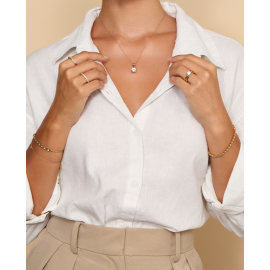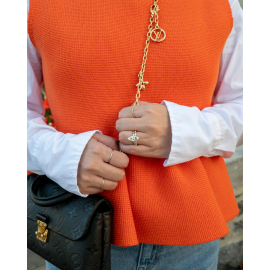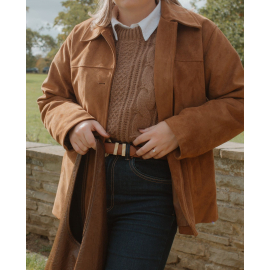Price match guarantee

We’ve teamed up with Klarna to provide flexible payment options, allowing you to shop the way you want. With Klarna, you can split your payment into 3 instalments or choose to pay later, making your shopping experience smoother and more convenient. Your order total must be between £100 and £499 to qualify.

We’ve teamed up with Klarna to provide flexible payment options, allowing you to shop the way you want. With Klarna, you can split your payment into 3 instalments or choose to pay later, making your shopping experience smoother and more convenient. Your order total must be between £100 and £499 to qualify.

September 19, 2019 | by Admin
It is law within the UK that every item of precious metal sold such as Platinum, Gold, Silver is stamped labelling the item with the type of metal it is. Platinum pieces which weigh less than 0.5 grams, 18ct Gold and Palladium pieces weighing less than 1.0 gram and Silver pieces weighing less than 7.78 grams are except from hallmark.
At Diamonds Factory all our products are hallmarked as per UK hallmarking law from London Assay Office (The GoldSmith Company)
The Goldsmiths' Company Assay Office is the oldest assay office in the United Kingdom. It has provided hallmarking services since The Goldsmiths' Company was founded in the 1300s. The company received its royal charter in 1327 and ranks 5th in order of precedence of the 12 Great Livery Companies of the City of London.
Hallmarking dates back to the 1300s when Edward I of England passed a law requiring any item made of silver, which was offered for sale, to be at least of equal quality as that of the coin of the realm (silver currency). The wardens of The Goldsmiths' Company were tasked with visiting workshops in the City of London to assay (test) silver articles. If these articles were found to be below standard they were originally destroyed and the metal forfeited to the King. If they passed, each article received the King's mark of authentication - the mark of a leopard's head. By 1478, there were several hundred workshops and merchants manufacturing silver articles in the City of London. It was not possible for the wardens to visit them all so the merchants were ordered to bring their items to Goldsmiths' Hall for testing and marking and a permanent Assay Office was established in the building. This is the origin of the term hallmark - struck with the King's mark at Goldsmiths' Hall.
In 1544 the Goldsmith's Company adopted the King's mark as their town mark and the mark of the leopard's head is now internationally recognised as the mark of this assay office.
The Goldsmiths's Company Assay Office is still based at Goldsmiths's Hall and remains the oldest company in Britain to be continually trading from the same site. However, it also has two satellite offices; at Greville Street in Hatton Garden in the heart of the London jewellery quarter and within a high security complex near London's Heathrow airport. It now has a new off-site facility within the Dalston-based jewellery manufacturer, Allied Gold. This is the first time in the Assay Office's 700 year history that it has opened permanent hallmarking services on a customer's premises.
In addition to hallmarking, the office has now expanded its range of services to support the jewellery trade and enforcement authorities. It offers a variety of specialist analytical services including nickel, lead & cadmium testing, antique silver dating, non-destructive compositional analysis, plating thickness measurement and a melt and assay service for scrap precious metal carried out in their fully independent on-site laboratory. Other services offered are a jewellery valuation service, laser marking, trading standards assistance, high quality photography and a comprehensive range of training and educational seminars, lectures and specialist events.






If you didn’t know already, the birthstone for September is the highly coveted sapphire. Most usually associate the sapphire with being the rich blue variety that has been favoured by royalty for many years, however, sapphires can, in fact, be found in a large array of colours. This prized gemstone is also a popular engagement ring choice and is traditionally used to celebrate the 45th wedding anniversary as it pairs beautifully with diamonds.
How did the sapphire get its name?
There are many ways the sapphire found its name. The word sapphire stems from several ancient languages. For example, the Latin sapphirus (meaning blue), the Greek word sappheiros for the island of Sappherine where sapphires were found in ancient Grecian times and the Arabic Safir.
It was also the gem of the Greek god Apollo, the god of prosperity, and was worn by worshippers visiting his shrine in Delphi.
How are sapphires formed?
Like most naturally occurring gemstones, sapphires are formed by the different shifts, in heat and pressure, and chemical changes that take place in the earth. Therefore sapphires are typically found in metamorphic and igneous rocks.
The sapphire is, in fact, a relative of the ruby. Both are forms of the mineral corundum which is normally a drab grey hue. It is only the red variety of the mineral corundum that isn’t classed as a sapphire, this is what we identify as ruby. Sapphires are mostly composed of aluminium oxide and therefore it is the traces of other elements that provide the gemstone with a particular hue, whether that be blue, yellow or pink. More specifically it is the presence of titanium and iron elements that create the popular blue tones that sapphires are known for.
Sapphires are very durable and rate as 9 on the Mohs Scale of Hardness, making them perfect for everyday wear.
What do sapphires symbolise?
Sapphires are said to symbolise many different things, originally Kings and Queens in ancient Rome and Greece believed that blue sapphires could protect them from harm and envy. The gemstone was thought to have the ability to suppress negative thoughts and was considered an emblem for power and strength. Ivan the Terrible of Russia once claimed that sapphires could strengthen the heart and endow the wearer with courage.
Today sapphires are thought to represent kindness and good judgement along with strength. They are one of the most popular gemstones for women and are widely used in bridal jewellery, possibly as they symbolise trust and loyalty.
Where can sapphires be sourced?
Believe it or not, the biggest source of sapphires worldwide is Australia. Other places they can be sourced include Madagascar, Cambodia, Thailand, Sri Lanka, Myanmar (Burma), and Montana in the US.
What are the world’s most famous sapphires?
There are plenty of iconic sapphires, possibly one of the most spoken about today is the Duchess of Cambridge’s sapphire and diamond engagement ring. This beautiful design was originally worn by Princess Diana and was given to the Duchess by Prince William.
Other notable pieces include Queen Elizabeth II’s sapphire and diamond set which was given to her by her father, King George VI, for her wedding. Princess Diana also often wore a beautiful sapphire and pearl choker to events and on special occasions.
Celebrities seem to be fans of the beautiful gemstone too. Elizabeth Hurley, Gwyneth Paltrow and Penelope Cruz are just some of the famous names to have donned a sapphire engagement ring at some point.
Which celebrities were born in September?
If you were born in September, there are plenty of well-known names that share your birthday month with you. Stars such as Beyonce, Will Smith, Bill Murray, Adam Sandler, Zendaya, Jason Statham and Amy Poehler are among the many talents that were born in this month and share the sapphire as their birthstone.
What characteristics do September babies have?
Those born in September are thought to be hardworking, charismatic and persuasive. It is believed that the combination of these traits tend to make them overachievers at everything they do.
Did you know?
After diamonds, sapphires are among the most durable naturally occurring element. Due to their hardness, they are also used for industrial purposes. For example, the Apple Watch features lab-created sapphire glass in its screen.
Sapphires can be found in many hues, the rarest being a pinkish-orange variety called padparadscha.
Blue sapphires have long been associated with royalty and are one of the reasons we have a colour that is named “royal blue”, which refers to the hue of the gemstone.
If you are searching for a gift for a loved one this September why not check out our selection of beautiful gemstone pendants.